50+ SAMPLE Medical Checklist
-

Psychiatric Medical Clearance Checklist
download now -
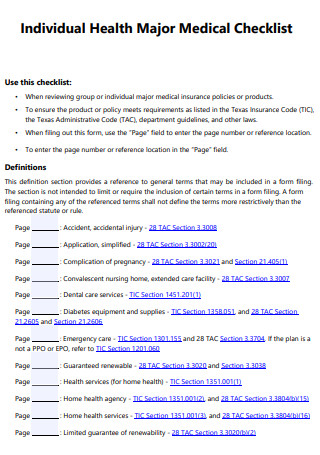
Individual Health Major Medical Checklist
download now -
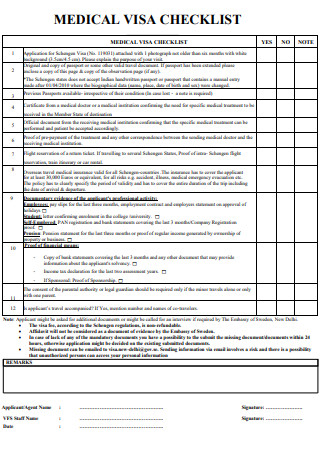
Medical Visa Checklist
download now -
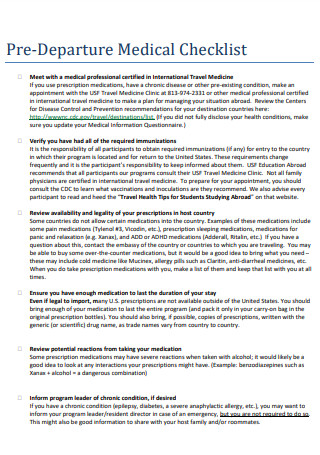
Pre-Departure Medical Checklist
download now -
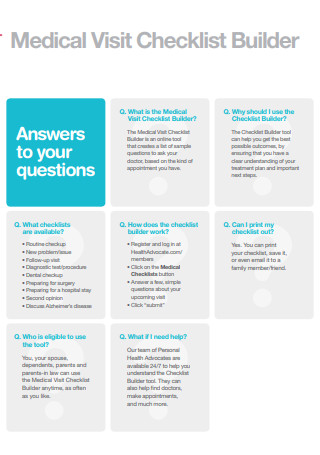
Medical Visit Checklist
download now -
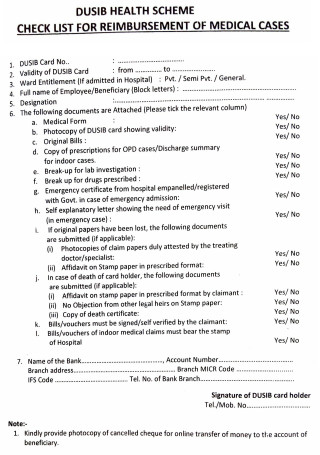
Reimbursement of Medical Cases Checklist
download now -
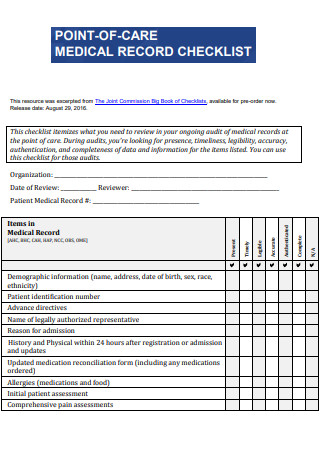
Medical Record Checklist
download now -
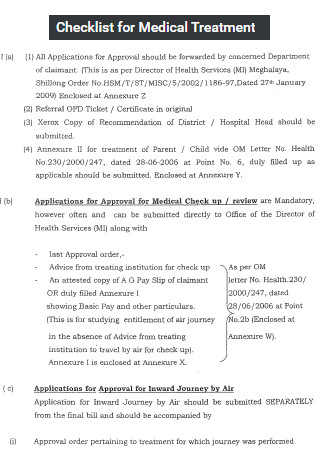
Medical Treatment Checklist
download now -
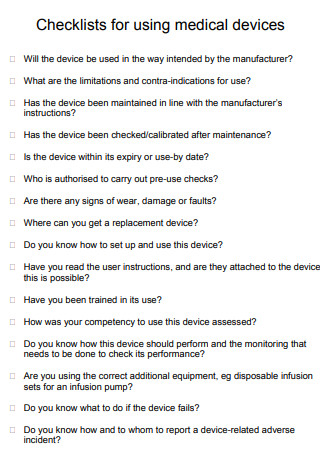
Medical Devices Checklist
download now -
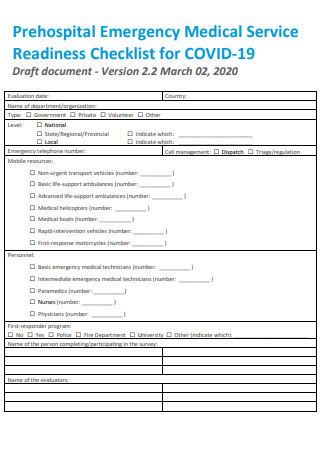
Emergency Medical Service Checklist
download now -
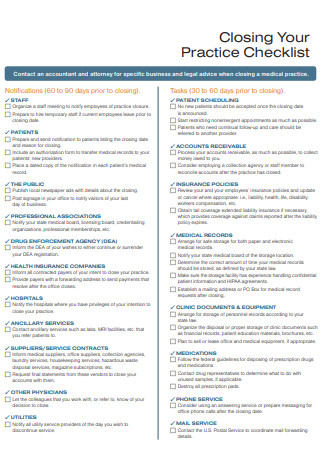
Closing Medical Practice Checklist
download now -
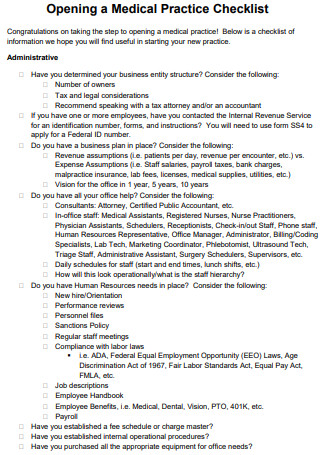
Opening Medical Practice Checklist
download now -
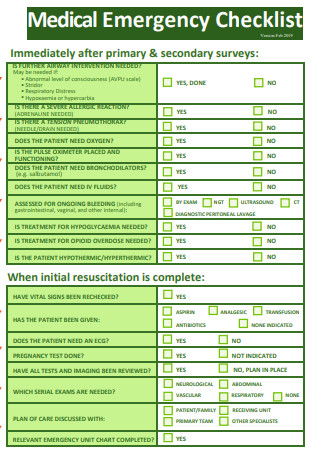
Medical Emergency Checklist
download now -
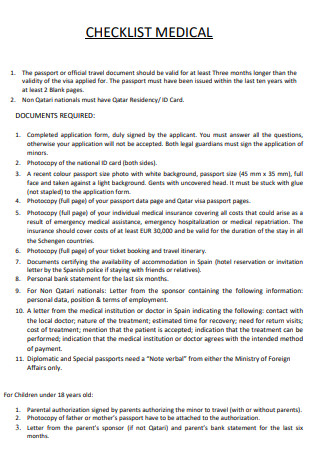
Medical Checklist
download now -
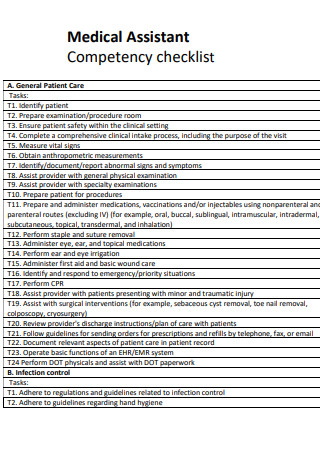
Medical Assistant Competency checklist
download now -
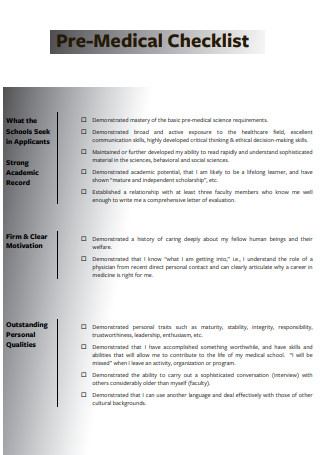
Pre Medical checklist
download now -
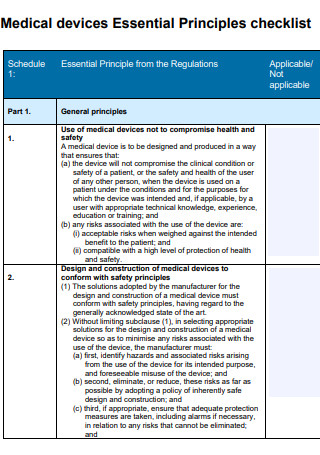
Medical devices Essential Principles checklist
download now -
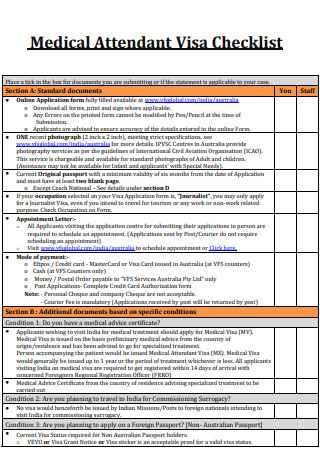
Medical Attendant Visa Checklist
download now -
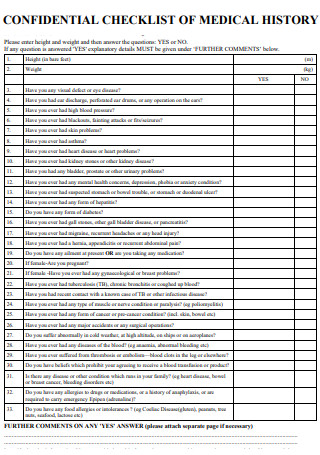
Medical History Confidential Checklist
download now -
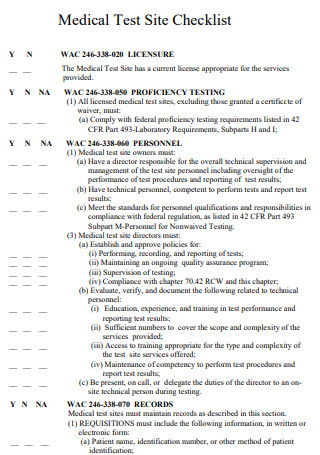
Medical Test Site Checklist
download now -
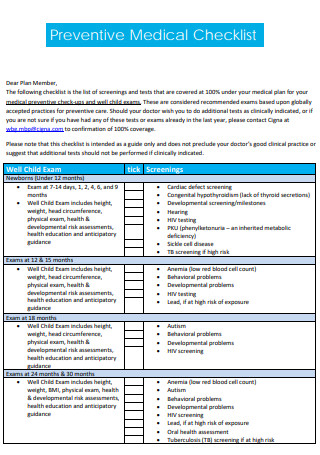
Preventive Medical Checklist
download now -
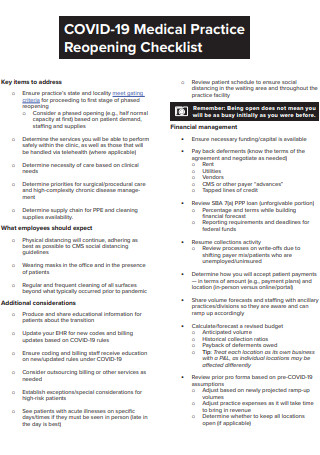
Medical Practice Reopening Checklist
download now -
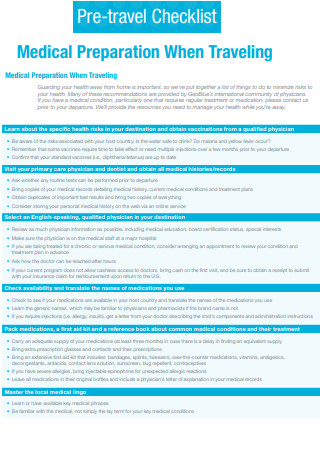
Medical Pre-Travel Checklist
download now -
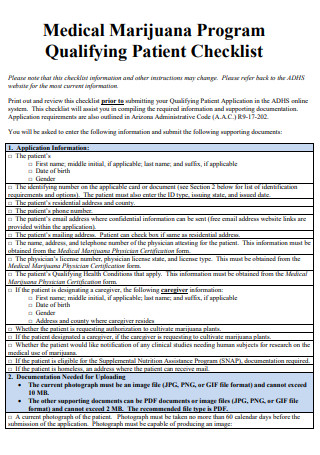
Medical Program Qualifying Patient Checklist
download now -
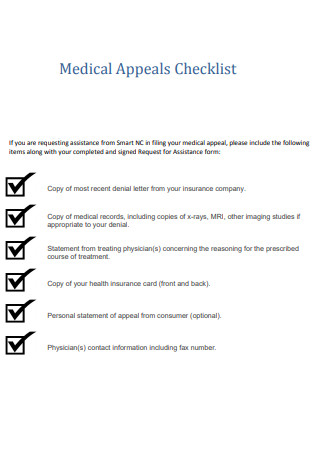
Medical Appeals Checklist
download now -

Medical Bag Checklist
download now -

Medical School Checklist
download now -
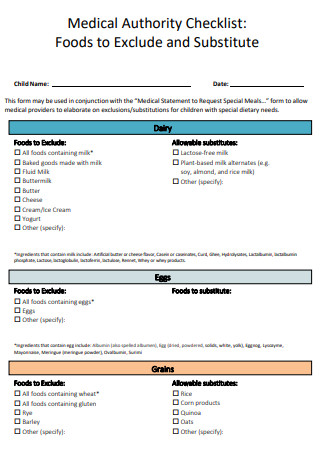
Medical Authority Checklist
download now -
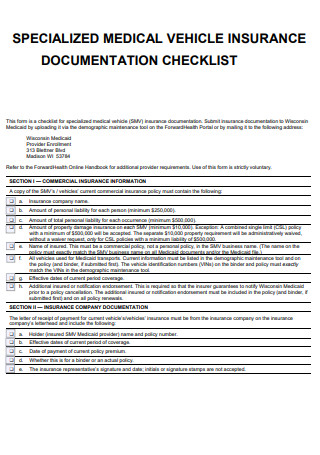
Medical Vehicle Insurance Documentation Checklist
download now -
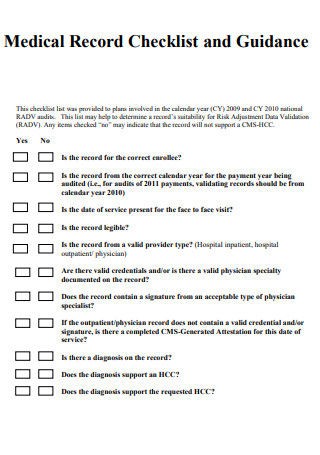
Medical Record Checklist and Guidance
download now -
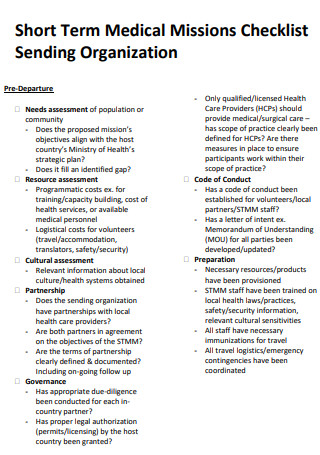
Short Term Medical Missions Checklist
download now -
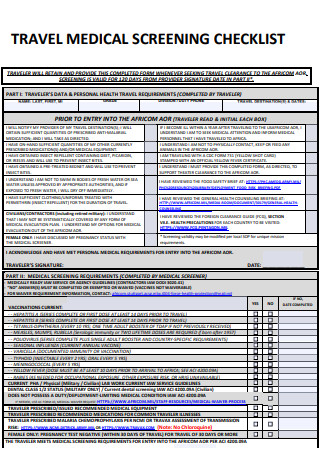
Medical Screening Checklist
download now -

Family and Medical Leave Employee Checklist
download now -
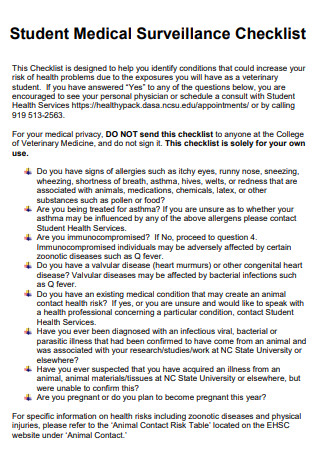
Student Medical Surveillance Checklist
download now -
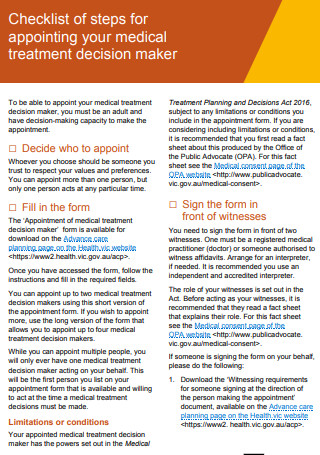
Medical Treatment Decision Maker Checklist
download now -
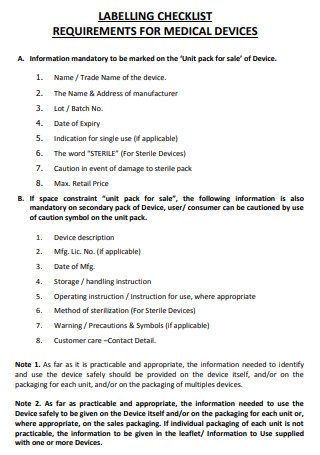
Requirements for Medical Devices Labelling Checklist
download now -
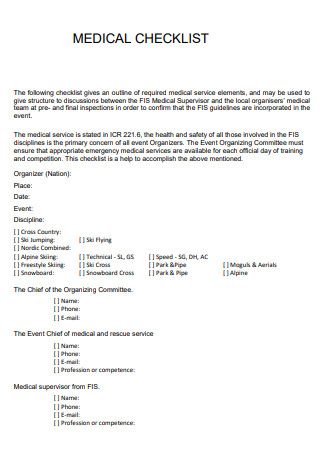
Medical Checklist Example
download now -
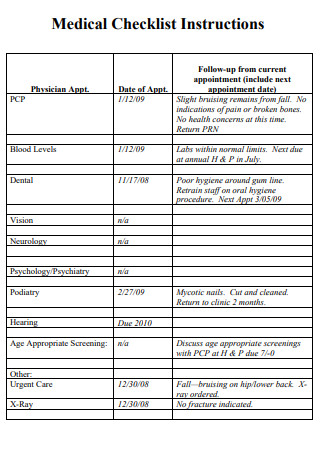
Medical Checklist Instructions
download now -
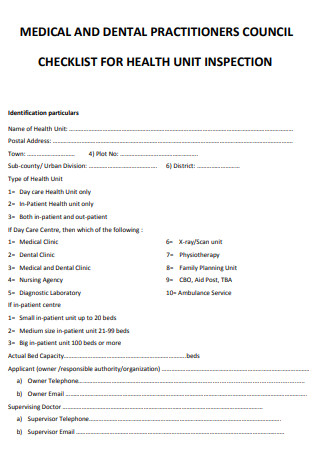
Medical and Dental Checklist
download now -
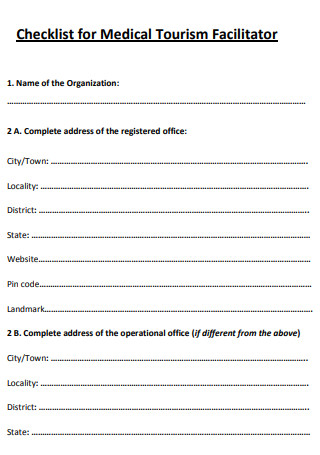
Medical Tourism Facilitator Checklist
download now -
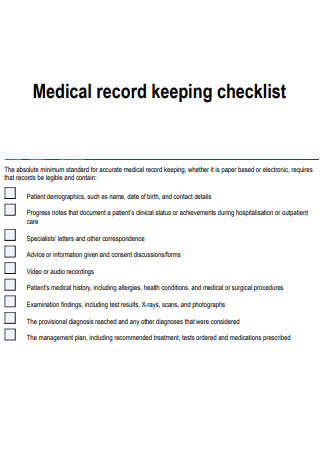
Medical Record Keeping Checklist
download now -
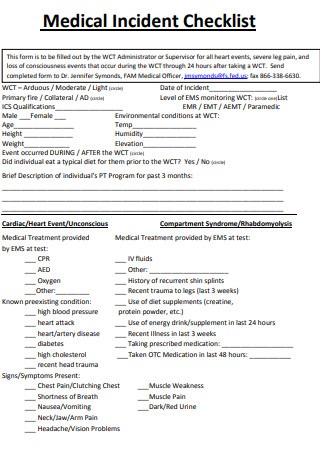
Medical Incident Checklist
download now -
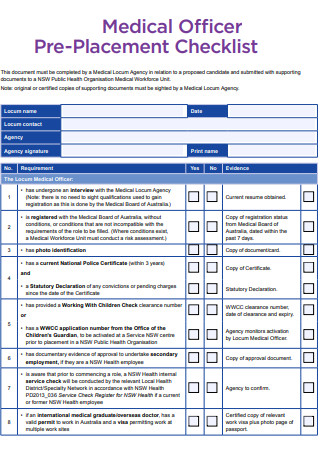
Medical Officer Pre-Placement Checklist
download now -
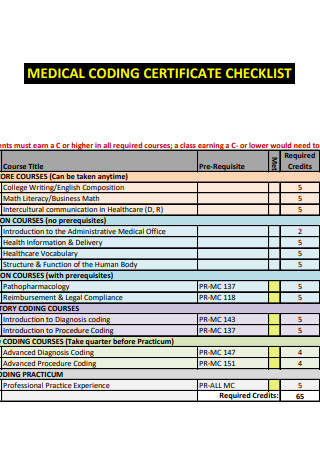
Medical Coding Certificate Checklist
download now -
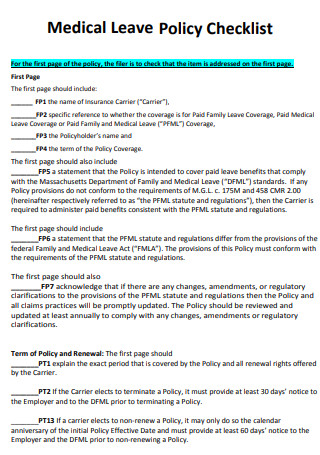
Medical Leave Policy Checklist
download now -
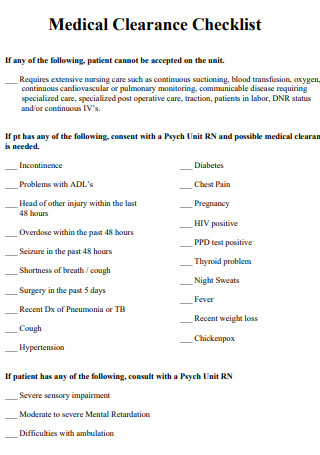
Medical Clearance Checklist
download now -
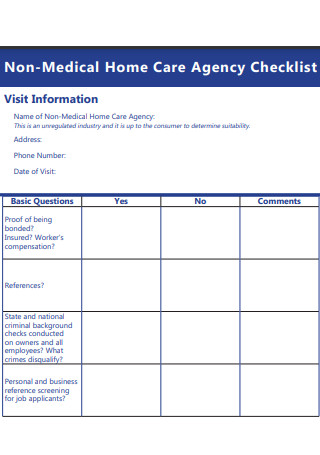
Non-Medical Home Care Agency Checklist
download now -
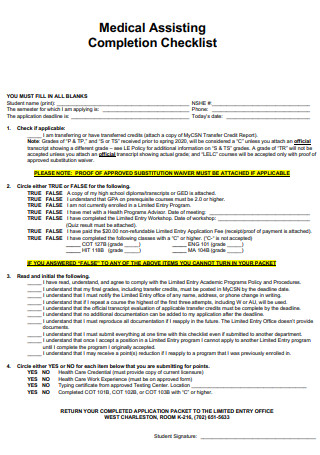
Medical Assisting Completion Checklist
download now -
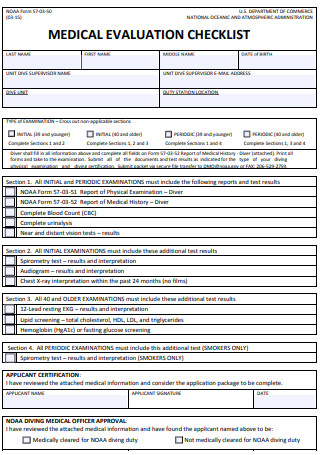
Medical Evaluation Checklist
download now -
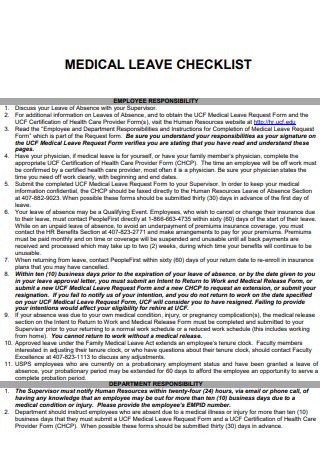
Medical Leave Checklist
download now -
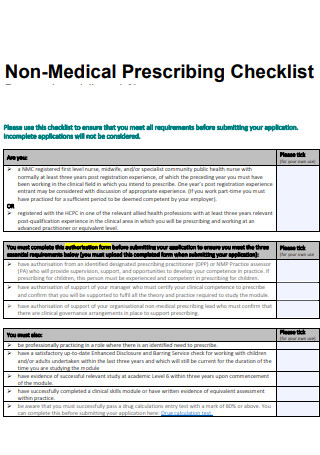
Non-Medical Prescribing Checklist
download now
What Is a Medical Checklist?
The term “medical checklist” refers to the practice of using a checklist in hospitals, surgery, and nursing. Surgery is a high-risk treatment, and a list assures that surgical teams follow established standards of care. It guides users through complex operations that require precise task completion to avoid infection. Maximize checklists to prevent unnecessary deaths and disabilities during surgery and patient recovery. According to statistics, surgeons implement safety checklists in 90% of operating rooms.
Benefits of Working In a Hospital
Healthcare is a broad phrase frequently used to refer to many vocations that provide health services to persons in need. However, the rewards associated with healthcare occupations make them attractive among graduates wishing to transition to a more lucrative career. The following are the top seven unique benefits of working in the healthcare industry.
Types of Hospital Checklist
Hospitals and other medical institutions are increasingly focusing on checklists to treat patients more effectively, provide a safe and secure place for healing, and improve the overall patient experience. Why? Because countless studies have demonstrated that they work, and because medical professionals operate in an industry where human error can result in a patient’s death, medical professionals need to execute processes accurately, on time, and without skipping a single step. While you may initially believe that hospital checklists would be a disadvantage in a career that requires rapid, effective response, this is not the case when checklists are correctly integrated and utilized. Scroll down for a quick introduction to each and links to other relevant resources.
-
1. Hospital Housekeeping Checklist
To begin and to avoid any misunderstanding, housekeeping refers to the general cleaning of patient rooms in hospitals and other medical institutions. This category covers flooring, walls, beds, baths, and various medical and non-medical equipment. Proper disinfection and sanitization are critical for preventing the spread of infectious diseases and providing a safe and pleasant atmosphere conducive to a rapid recovery. This detailed checklist details each step necessary to thoroughly clean a patient room, from donning disposable gloves and posting a safety warning near the door to sanitizing equipment and high-touch surfaces.
2. Terminal Room Cleaning Checklist
Like the last one, this checklist is concerned with cleaning a room. The critical distinction is that a terminal room is unoccupied due to a patient being moved or discharged. It thus includes several additional tasks that would not be appropriate when performing daily housekeeping in a patient’s room. Terminal room cleaning aims to eliminate infectious pathogens that may have appeared during the patient’s stay and offer the future occupant a sanitary environment conducive to recovery and healing.
3. Hospital Safety Inspection Checklist
While conducting a safety inspection is not unique to the medical industry, one could argue that it is even more critical given the nature of a hospital’s obligations. Consumer Reports discovered that even the highest-scoring medical facilities in the United States obtained just a protection rating of 70 to 75 points out of 100. Additionally, the study stated that hospitals that do not undertake adequate safety inspections contribute to roughly 200,000 patient deaths each year in the United States. As a result, it is critical that your hospital understands the value of frequent safety inspections and prioritizes them.
4. General Infection Control Checklist
According to WHO, infection prevention and control is a scientific method and practical solution to prevent infection-related harm to patients and health care personnel. And, as you might guess, it’s critical. A checklist is a beneficial tool for conducting such audits since it clearly states each activity that must be done and allows for identifying and resolving any errors made by staff employees. By utilizing this checklist, you can guarantee that all necessary precautions are taken to prevent the spread of infectious trash across your healthcare facility.
5. Home Visit Checklist
Home visits are a critical component of healthcare, but their quality varies significantly depending on the healthcare professional’s behavior and the amount of information acquired during the visit. Because the patient is in their natural habitat, their comfort zone, it is critical that any healthcare practitioner that visits them has a clear objective and acts with kindness and politeness. While the latter cannot be controlled or reached through a checklist, the former most certainly can. During a home visit, specific chores should be accomplished to guarantee that the medical personnel leaves with essential data that can be used to care for the patient in any way necessary.
6. Mental Health Risk Assessment Checklist
Mental health is a vast and nuanced subject. Nothing is as straightforward as it appears. Thus, even when using a comprehensive checklist, it is critical that the healthcare practitioner conducting the evaluation is qualified and understands the sensitivity involved in evaluating a client experiencing substantial distress. With that said, the checklist we developed for conducting a risk assessment of an individual with mental health issues is an excellent tool for ensuring that no critical data points are missed. This checklist will lead you through all of the crucial parts of mental health disorders, equipping you with the tools necessary to accurately assess what needs to be done to assist the patient regain control of their life as quickly as possible.
How To Take Care of Patients
According to NCBI, patient-centered treatment has been linked to decreased pain and discomfort, accelerated physical and mental recovery, and improved outcomes and quality of life. Adhere to the following fundamental principles to enhance your team’s patient care and health outcomes:
-
1. Exhibit respect
Your patients, like you, have both direct and indirect wants and desires that influence patient outcome. Their level of medical education, budgetary constraints, transportation availability, and access to care all affect their decision-making and patient experience. Acknowledging and addressing patient concerns implies that you view them as unique individuals with distinct needs. This type of patient care may also motivate patients to respect their health journey and adhere to their treatment plan. Not sure where to begin with this type of patient care? Researchers at Harvard Medical School have established eight guiding principles for patient-centered care planning. All of them are fueled by respect.
2. Convey appreciation
You’re appreciative to have a practice where you can care for people and assist them in reaching their health goals. Express your thankfulness to them at every opportunity. A simple “Thank you for choosing our practice” goes a long way, even more so when complemented by tiny details such as eye contact and the patient’s name. According to The Clinical Advisor, medical personnel that demonstrates these fundamental social skills achieve much higher levels of patient satisfaction. Excellent patient care satisfies basic human needs. Inquire about each patient and their family’s preferences, goals, and expectations. When you trust them as a healthcare partner, they will be more receptive to your advice and become devoted patients. Reward loyalty with milestone and holiday goodies or gift certificates when a patient introduces a friend or a family member to help spread the word about your expertise. When you show your gratitude consistently, you will reap the economic rewards of the patient-centered care model: increased referrals.
3. Facilitate access to care
To improve care for patients across geographies, ethnic groups, and social classes, medical practitioners have expanded beyond the typical medical setting to address social determinants of health. Persistent, long-term factors such as education, social status, money, and living environment all contribute significantly to patient care and disease prevention or reduction. By addressing these variables, patient outcomes will improve. To accomplish this, care team members must be familiar with a patient’s medical history and utilize patient care technology that aids in the prevention of errors and promotes care plan compliance. It is vital to make appointment scheduling simple. A prospective patient should never have to wait on hold or click on your website five times to reach you or arrange an appointment. Patient care platforms simplify this process – they even send welcome and thank-you letters to new patients once they make an appointment. Care Management software enables you to compassionately manage patient care while fulfilling each patient’s needs and family members, aiding decision-making and care plan implementation.
4. Involve family and friends of patients
Medical professionals who are family-centered enable competent patients and their caregivers to participate in healthcare decision-making. Patient-centered care emphasizes the context and extensive life experiences that can either cause sickness or facilitate healing. As care plans grow more collaborative, medical practitioners improve their ability to communicate patient-centered care effectively. Providers across all specialties are developing their ability to listen, encourage choice, provide information, foster trust, and support compliance – all of which enable them to spend their time and energy more efficiently. When doctors communicate the potential benefits and risks of care plan medication to the patient’s family, they build the trust necessary to improve the patient experience.
FAQs
What role do checklists have in healthcare?
In healthcare, checklists are defined as sequential actions that enable users to consistently do each step, record its completion, and minimize errors. Checklists can assist employees and staff in achieving improved outcomes in healthcare.
What is the purpose of a daily checklist?
Checklists for the day are to-do lists. They should be brief and direct. A daily checklist should include the most critical chores that must be performed before the end of the day.
When are checklists appropriate?
When performing a task that requires numerous steps, it’s simple to overlook one or two of them. By employing checklists, you may ensure that you do not miss anything. Thus, a list is an invaluable tool if you perform a task often and wish to do it correctly each time.
Checklists are utilized in both the medical and non-medical fields as cognitive aids to assist users in completing tasks accurately. They are helpful in various areas of performance enhancement and error prevention, both clinical and administrative. Therefore, if you work in a hospital, it is prudent to establish a checklist, as this is one of the ways to simplify your job and ensure your patients’ comfort. If you’re ready to make one, you can start by downloading one of the free templates listed above!
